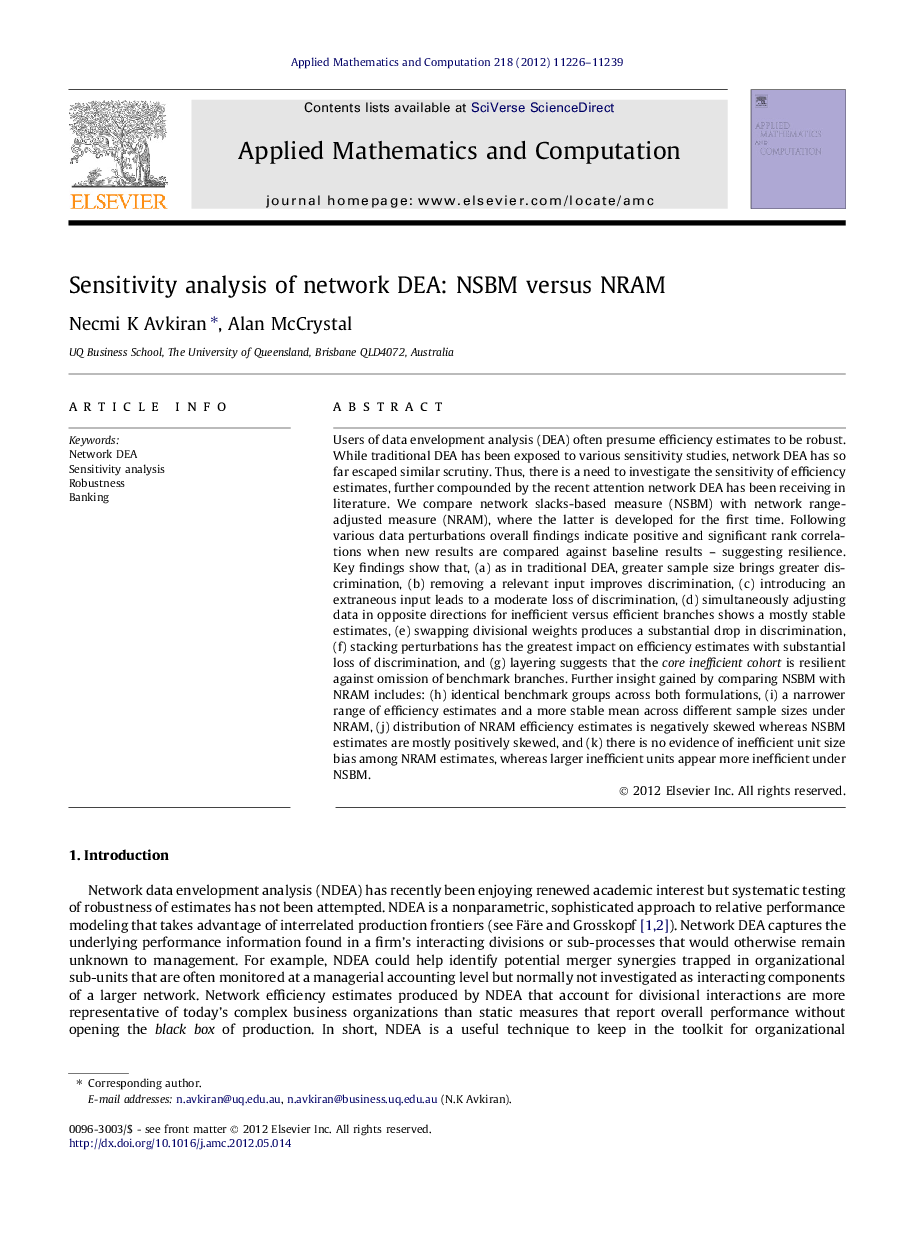| Article ID | Journal | Published Year | Pages | File Type |
|---|---|---|---|---|
| 4629431 | Applied Mathematics and Computation | 2012 | 14 Pages |
Users of data envelopment analysis (DEA) often presume efficiency estimates to be robust. While traditional DEA has been exposed to various sensitivity studies, network DEA has so far escaped similar scrutiny. Thus, there is a need to investigate the sensitivity of efficiency estimates, further compounded by the recent attention network DEA has been receiving in literature. We compare network slacks-based measure (NSBM) with network range-adjusted measure (NRAM), where the latter is developed for the first time. Following various data perturbations overall findings indicate positive and significant rank correlations when new results are compared against baseline results – suggesting resilience. Key findings show that, (a) as in traditional DEA, greater sample size brings greater discrimination, (b) removing a relevant input improves discrimination, (c) introducing an extraneous input leads to a moderate loss of discrimination, (d) simultaneously adjusting data in opposite directions for inefficient versus efficient branches shows a mostly stable estimates, (e) swapping divisional weights produces a substantial drop in discrimination, (f) stacking perturbations has the greatest impact on efficiency estimates with substantial loss of discrimination, and (g) layering suggests that the core inefficient cohort is resilient against omission of benchmark branches. Further insight gained by comparing NSBM with NRAM includes: (h) identical benchmark groups across both formulations, (i) a narrower range of efficiency estimates and a more stable mean across different sample sizes under NRAM, (j) distribution of NRAM efficiency estimates is negatively skewed whereas NSBM estimates are mostly positively skewed, and (k) there is no evidence of inefficient unit size bias among NRAM estimates, whereas larger inefficient units appear more inefficient under NSBM.
